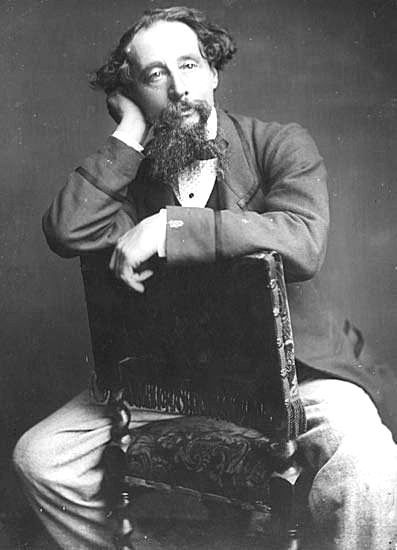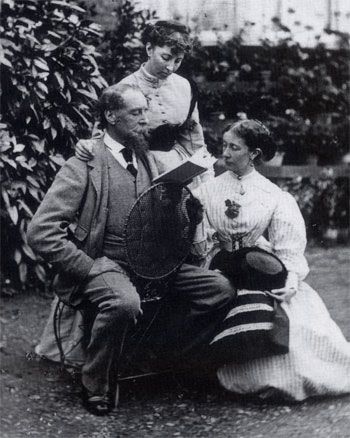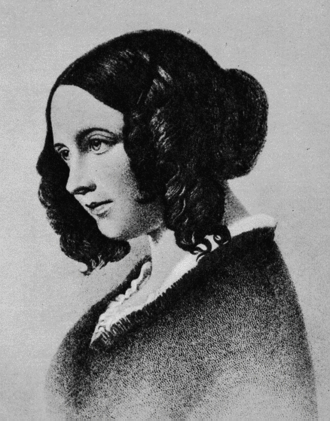Exactly 205 years ago, on February 7, 1812, in Portsmouth, England, the world welcomed a boy named John Huffam Dickens—thankfully known to the rest of us simply as Charles Dickens. The future literary giant would become one of the most influential novelists of the 19th century and a master of realism with a flair for the dramatic (both on and off the page).
Up until the age of 12, little Charles had a relatively peaceful, upper-middle-class childhood. He went to private school, his family had noble connections, and life wasn’t too hard. But then came the twist. His father, John Dickens—a charming but rather irresponsible man—landed in debtor’s prison. The family fell into hardship, and young Charles was pulled out of school to work ten-hour days at Warren’s Blacking Warehouse, pasting labels on pots of shoe polish for six shillings a week. (Yes, Dickens, the future author of Oliver Twist, lived it before he wrote it.)
Even after the family inherited some money and could have given him his childhood back, his mother, Elizabeth, didn’t immediately pull him out of the factory. This moment would haunt Dickens and deeply influence his views on family roles. He believed a father should lead, and a mother… well, should probably stay out of decisions that affect a boy’s emotional well-being. His strained relationship with women in his novels? Now we know why.
As a young man, Dickens worked various jobs—a lawyer’s clerk, a court stenographer, and eventually, a journalist. During the 1830s election campaigns, he began publishing his early sketches under the pseudonym “Boz”—which, fun fact, was his younger brother’s mispronunciation of “Moses” from The Vicar of Wakefield. His first novel, The Pickwick Papers, was serialized in 1833 and became an instant success.


Then came love. Well, a few versions of it. First, a failed romance with Maria Beadnell (who later inspired the character Dora in David Copperfield). Then, marriage to Catherine Hogarth, with whom he had—brace yourself—ten children. Ten! At first, Dickens was smitten, but over time he grew distant, critical, and downright cruel. He blamed her for their large brood, belittled her intellect, and ultimately decided she wasn’t up to snuff. In 1858, after 22 years of marriage, he announced their separation via the London Times—as you do—and described her privately as a depressing, incompetent mother. Catherine was forced to move out alone, without her children, and received a modest annual allowance of £600.
But wait, the family drama doesn’t stop there.
Dickens had a peculiar attachment to Catherine’s sister, Mary Hogarth, who lived with the couple and died suddenly at age 17. Heartbroken, Dickens requested to be buried next to her—yes, not his wife—and even wore her ring until his own death. Victorian eyebrows were raised.

Enter: Ellen “Nellie” Ternan, an 18-year-old actress Dickens met when he was 45. He fell hard. Very hard. Their relationship remained a carefully guarded secret, wrapped in coded letters and pseudonyms, with Dickens even burning nearly all evidence of their love affair. Ellen eventually left the stage and lived off Dickens’s financial support. They had a child who tragically died in infancy. Dickens adored her and called her “my magic circle”—possibly because she was the only one who didn’t criticize his ever-expanding ego. After his death in 1870, he left her £1,000 and a lifelong trust fund. Their hidden story was later brought to light in the film The Invisible Woman.
Despite his personal messes, Dickens kept writing. He wrote constantly. He feared bats, suffered from insomnia, and kept a pet raven named Grip, who may or may not have inspired Poe’s The Raven. He also helped launch the Daily News, invested in copyright, and remained a public figure until his death from a stroke at age 58. He’s buried in the Poets’ Corner of Westminster Abbey—right where his talent belongs.

His novels were nothing short of revolutionary. With biting satire and heartfelt empathy, Dickens held up a mirror to 19th-century English society. The grotesque poverty of Oliver Twist, the joyful absurdity of The Pickwick Papers, the semi-autobiographical soul-searching of David Copperfield, and of course, the seasonal magic of A Christmas Carol—they all stand as proof of his storytelling genius.
His last novel, The Mystery of Edwin Drood, was left unfinished at his death. But here’s where the story gets spooky: in 1873, a man named Thomas James, a printer’s assistant, claimed to have received the remaining six chapters of the novel via spiritual dictation from Charles Dickens himself. Yes, ghostwriting—literally.

Dickens wasn’t perfect. He was brilliant, flawed, a bit of a drama king, and maybe not the ideal family man—but he gave us stories that still shape the way we think about justice, poverty, class, and love. And for that, I forgive him. Mostly.

